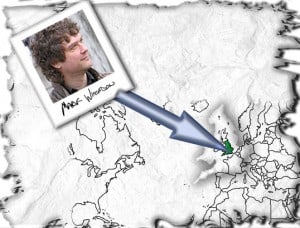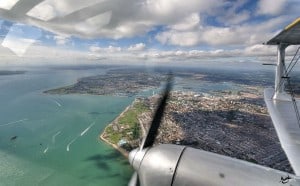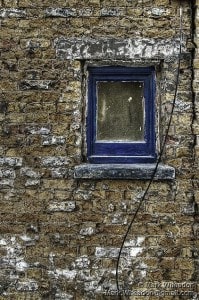Last week I reviewed the Android App, Photo Enhance. Shortly after I posted it I let the creator, Mark Wheadon, know of its existence via email. I was pleased to discuss HDR with over several emails last week. After seeing his images and discussing HDR with him, I knew I had to do a feature. Mark has an awesome approach to HDR and mixes many techniques to get his signature look. Along with his incredible HDR skill is his talent for software development, Photo Enhance Pro is his smartphone approach to Pseudo-HDR post production of cell phone snaps. Check out what Mark has to offer in this brief interview.
What kind of equipment do you work with? Is there any one piece of equipment you feel helps you with the HDR process the most?
My core equipment is a Nikon D300, with a Nikon 18-200 and a Sigma 10-20. I think the combination of the decent low-noise sensor in the D300 and the in-your-face wide angle of the Sigma, lends itself to high impact HDR images. The lens is a little soft at the edges when wide-open, but it’s a gem at f5.6 and above.
I know when I started looking at HDR images there were a few artists in particular that inspired me to start shooting in HDR. Was there an artist or specific picture that pushed you in the direction of HDR?
Yes, “Stuck in Customs”‘s images first switched me on to HDR. His images still excite, and there’s a wonderful sense of movement in some of them.
Last week I reviewed your, very helpful, “Photo Enhance” android app, how did you get into app development? What struggles did you have with the process, if there were any?
I’ve been into software development since my teens — it’s the creative side of programming which drives me, making something which people will find useful, and making it appear simple with all the complexity behind the scenes. “Struggle” is a good word for it — I’m always surprised by how much work it is to get a program to full production quality and get it out there. I think you need to be a little obsessive to manage it outside of your day job. The struggle with Photo Enhance was working within Android’s limited memory budget, and then having to re-implement much of it in C to get it fast enough and to allow people to process full-resolution images.
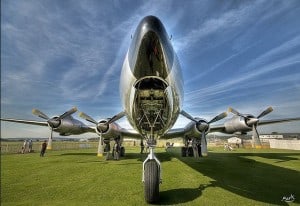 You have a very impressive style of HDR processing. Your blue skies are clean and crisp, free of halos and the detail is impeccable. Can you briefly explain your process? What HDR processing software do you recommend?
You have a very impressive style of HDR processing. Your blue skies are clean and crisp, free of halos and the detail is impeccable. Can you briefly explain your process? What HDR processing software do you recommend?
Thank you. I use a combination of layering in Photoshop, andPhotomatix to do the actual HDR tone-mapping.
For the skies, the sky has to be interesting in the first place or no amount of processing is going to make it pop. Other than that, the sky needs to come from an under-exposed image to make sure the interesting bits aren’t burned out, and I find I need to use the “highlights smoothness” slider to ensure that the white stays white and doesn’t settle into a tone-mapped sludgy grey.
The layering is about merging several different HDRs from the same original images. For example, multi-exposure HDRs from photomatix have a soft look to them that no amount of sharpening removes. This looks really nice as a background, but sometimes the foreground benefits from a sharper, more punchy image, which can either be a non-hdr image, or an HDR image made from a single RAW.
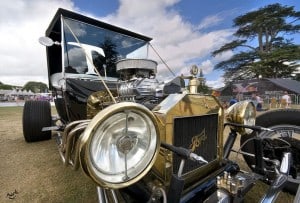 You can also use single-RAW HDR images to eliminate problems with movement (leaves blowing in the breeze for example, even short grass suffers from this) — punching in the single-RAW HDR image where needed using layer masks in Photoshop, or simply using the singe-RAW image in its entirety. In the shot, I seem to remember the car isn’t tone-mapped at all, as the tone-mapping lost the chrome’s sparkle, but tone mapping was great for the sky and for softening the background and giving it that slightly surreal look.
You can also use single-RAW HDR images to eliminate problems with movement (leaves blowing in the breeze for example, even short grass suffers from this) — punching in the single-RAW HDR image where needed using layer masks in Photoshop, or simply using the singe-RAW image in its entirety. In the shot, I seem to remember the car isn’t tone-mapped at all, as the tone-mapping lost the chrome’s sparkle, but tone mapping was great for the sky and for softening the background and giving it that slightly surreal look.
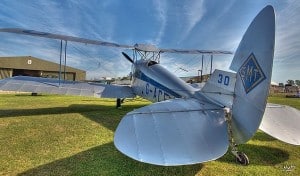 This is a good example of a single-exposure-RAW-HDR, with the right-hand-side of the tailplane and other small details punched in from a multi-exposure-HDR where the single-exposure had lost detail (blown highlights).
This is a good example of a single-exposure-RAW-HDR, with the right-hand-side of the tailplane and other small details punched in from a multi-exposure-HDR where the single-exposure had lost detail (blown highlights).
Is there anything you would like to add? The blog floor is yours!
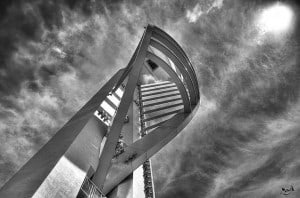 I think my other bit of advice is that if you want to produce really striking images then a good way is to be really close — invest in an ultra-wide lens, stick your elbows out, and get in there 🙂 Oh, and remember that HDR tone-mapping can make for wonderfully punchy black and white images as well.
I think my other bit of advice is that if you want to produce really striking images then a good way is to be really close — invest in an ultra-wide lens, stick your elbows out, and get in there 🙂 Oh, and remember that HDR tone-mapping can make for wonderfully punchy black and white images as well.
Want To See More Of Mark’s Work:

